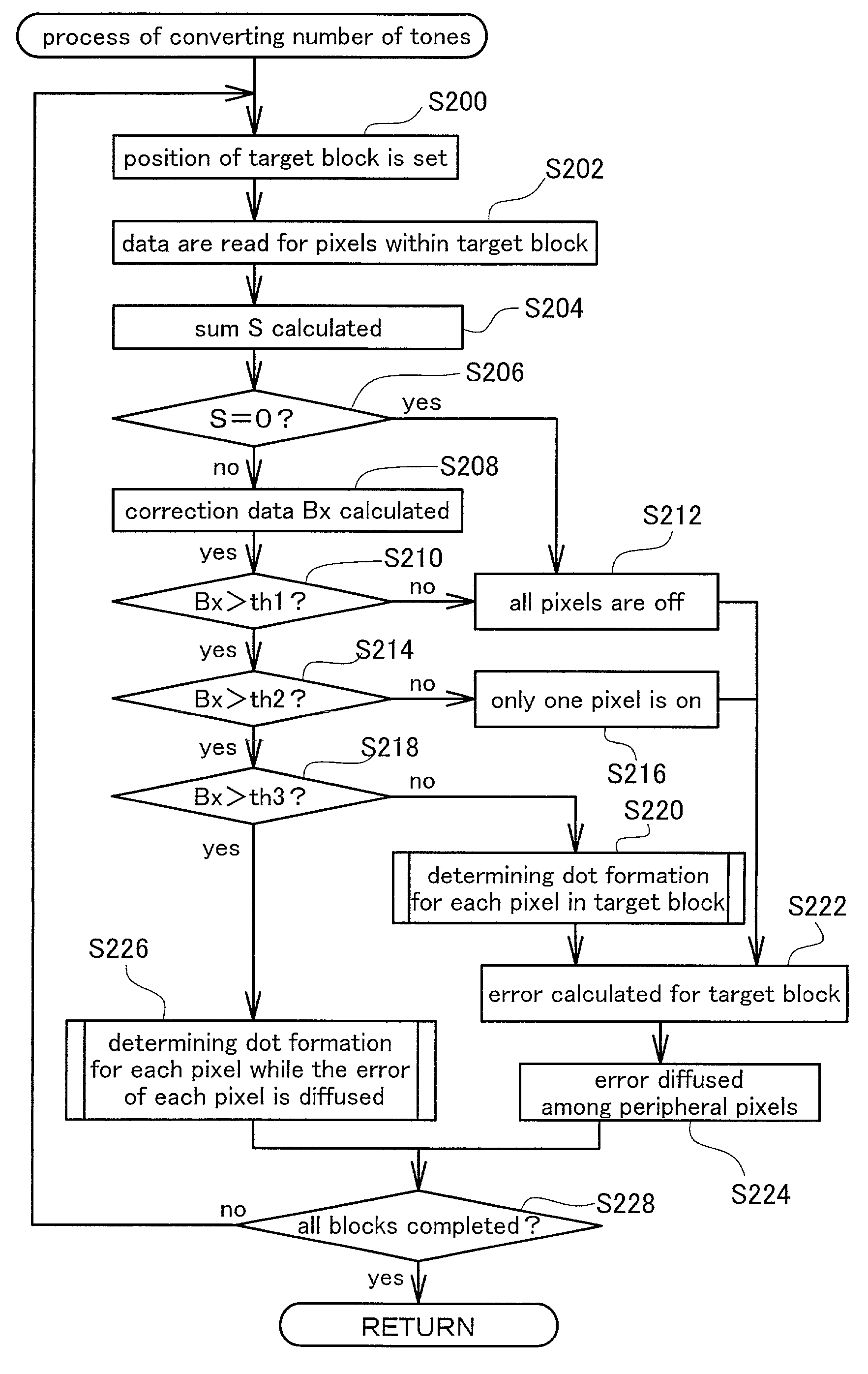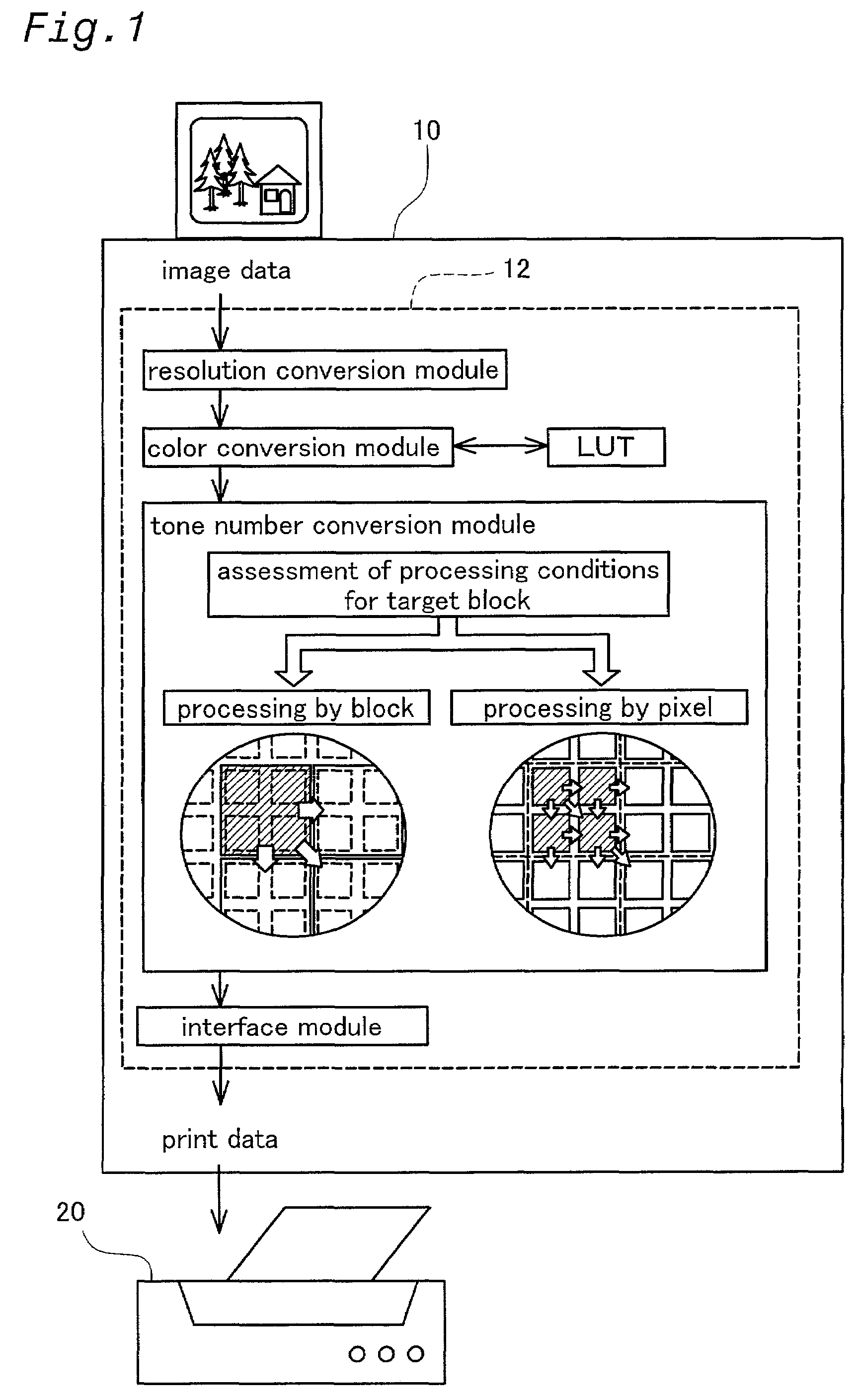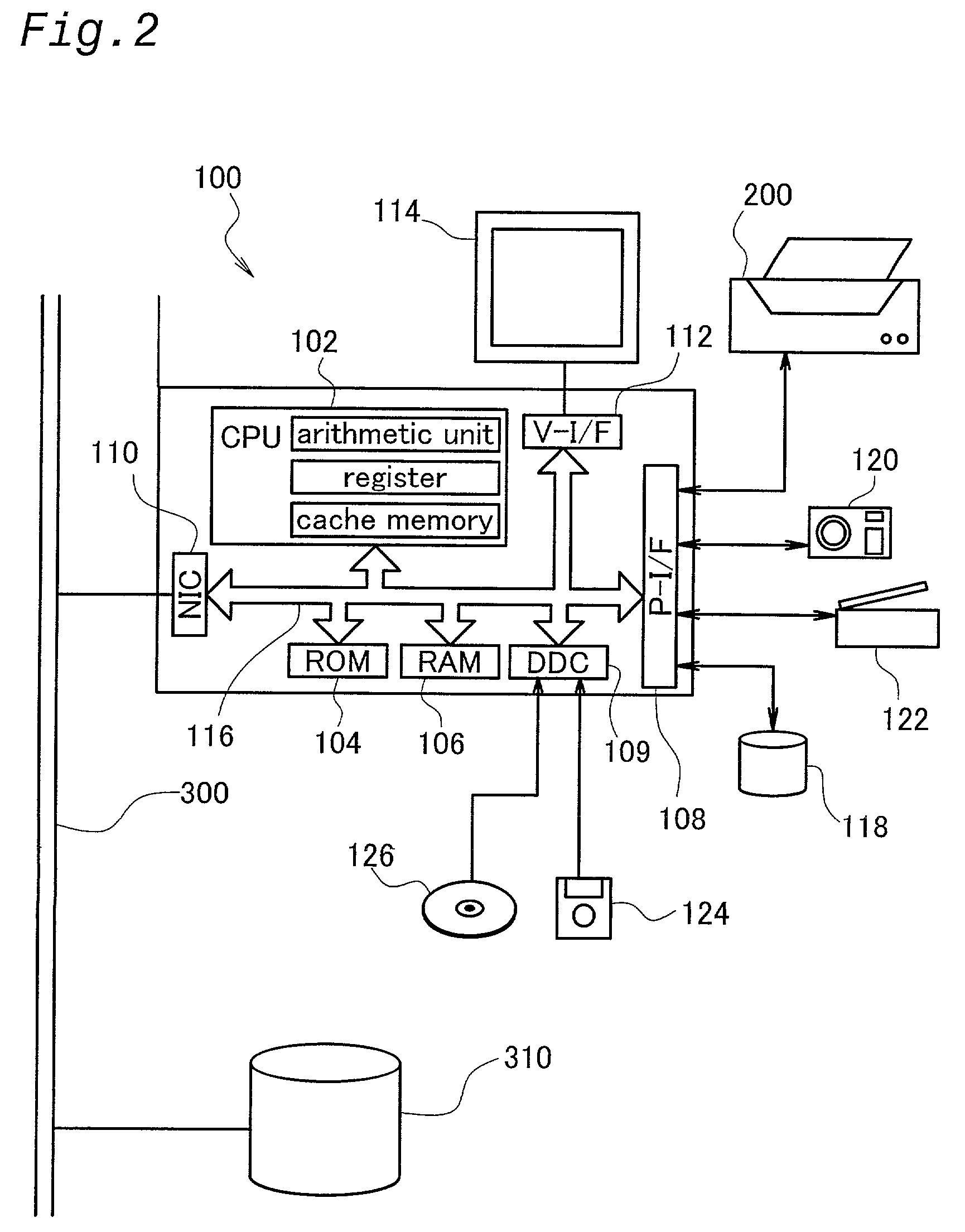Image-processing apparatus, print control apparatus, image-processing method, and recording medium
a technology of image processing and print control, which is applied in the field of image processing apparatus, print control apparatus, image processing method, and recording medium, can solve the problems of affecting the quality of displayed images, increasing processing time, and increasing the number of pixels in images, so as to achieve rapid image expression and reduce processing time , the effect of minimal deterioration of image quality
- Summary
- Abstract
- Description
- Claims
- Application Information
AI Technical Summary
Benefits of technology
Problems solved by technology
Method used
Image
Examples
first modification
E-1. First Modification
[0186]The above-described process of converting number of tones is such that when the sum S of a target block is equal to zero, that is, the tone value of each of the pixels constituting the target block is equal to zero (“yes” in step S206 of FIG. 5), it is concluded that no dots are formed in the block, and the errors generated by the target block are diffused among peripheral pixels (step S212 or 224 in FIG. 5).
[0187]An alternative, adopted when the sum S of a target block is continually equal to zero, is to assign zero as the diffusion error stored for each of the pixels in the block. In other words, a procedure such as the one shown in FIG. 18 may be performed in step S224 of FIG. 5. It is first determined whether the sum S of the tone values for the pixels constituting the target block is equal to zero (step S300), a value of 0 is assigned to a flag F (step S302) if the sum S is not equal to zero, and the tone errors generated by the target block are dif...
second modification
E-2. Second Modification
[0190]Although the above process of converting number of tones was described with reference to a case in which an appropriate method for determining dot formation was selected based on the sum S or the correction data of a target block, there is no need to always base the selection on the sum or the correction data as long as an appropriate method can be selected based on the tone values of the pixels constituting the target block. It is possible, for example, to select an optimum confirmation method by determining whether the position of the target block corresponds to an image edge, that is, lies in an area of an abrupt change in the tone values of image data.
[0191]FIG. 19 is a flow chart of a process in which the dot on-off state is determined using an appropriate method selected depending not only on the sum or correction data of a target block but also on whether the target block is on or off an edge area. The section containing an added procedure (step ...
PUM
 Login to View More
Login to View More Abstract
Description
Claims
Application Information
 Login to View More
Login to View More - R&D
- Intellectual Property
- Life Sciences
- Materials
- Tech Scout
- Unparalleled Data Quality
- Higher Quality Content
- 60% Fewer Hallucinations
Browse by: Latest US Patents, China's latest patents, Technical Efficacy Thesaurus, Application Domain, Technology Topic, Popular Technical Reports.
© 2025 PatSnap. All rights reserved.Legal|Privacy policy|Modern Slavery Act Transparency Statement|Sitemap|About US| Contact US: help@patsnap.com



